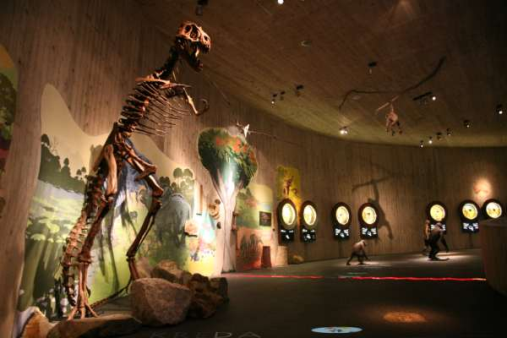- 29.05.2014 Souverni shop "Srčeko" gets a makeover
- 26.07.2012 Summer at the Krapina Neanderthal
- 20.07.2012 The St. Barbara Mine is open
- 20.07.2012 Special tourist offer of Hostel Samobor
- 08.09.2011 The UBU Association has set a sculpture park on Žumberak
- 08.09.2011 Samobor travel tour
- 08.09.2011 “Millennium of the cuisine” - traditional workshop of prehistoric, roman, medieval and traditional cuisine of Žumberak
- 25.11.2010 Keepers of the Licitar Heritage
- 01.04.2010 The New Museum of Krapina Neanderthals

01.04.2010
The New Museum of Krapina Neanderthals
At the end of March the new Museum of Neanderthal Man was opened in Krapina between the two hills - Hušnjakovo and Josipovac near Krapina, covering the area of 1,200 m2 and divided into two floors with modern technologies and interactive contents showing the origins of the world, human evolution and the discovery of fossil remains in Krapina.
The tour of the museum begins with a 16-minute film about the life of the Neanderthal men in Krapina and about Krapina in 1899, when teacher Rehorić from Krapina sent some peculiar bones to Dragutin Gorjanović Kramberger. The exhibition leads on through the progress of modern science, Columbus, Copernicus, the origin of the world and the begin of the geological science, to the first discoveries of ancient humans in the quarry in Neanderthal, Java Man in Spy in Belgium in 1886, the history of the Earth and the first organisms. The visitors may follow the progress of life from the first hominids who climbed down from the trees until the Neanderthals from Krapina. A detailed reconstruction of the Neanderthals of Krapina is presented in a half-cave with realistic statues made by the French sculpture Elisabeth Daynes. The figures are shown in various life situations according to research and the collection of Krapina. The last part of the museum shows the fast cultural and technological development of humankind. The special benefit of the museum is the option to participate interactively in the tour, watch films and reply to quizzes. The museum's modern architecture and multi-media presentations add to the dignity of one of the most famous Paleolithic locality in the world.
The archeological site Hušnjakovo in Krapina is the best known world site of the Neanderthal man with the richest and most versatile fissile collection. It is protected as the first paleontological nature monument in Croatia. The geological and paleontological research was done from 1899 until 1905, under supervision of the famous scientist Dragutin Gorjanović Kramberger. The layers of the cave preserved about nine hundred human fossil bones, numerous stone tools from Paleolithic Age, as well as fossil remains of the cave bear, wolf, moose, giant deer, rhinoceros, wild cattle and other animals. The site was dated back 130,000 years.
